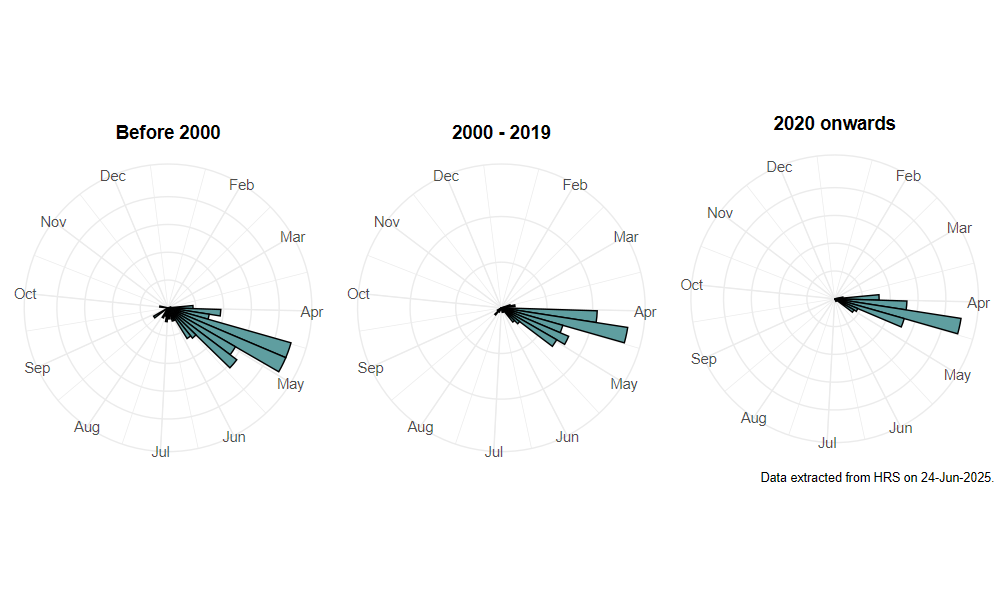Cheilosia urbana (Meigen, 1822)
Identification
Identification difficulty = 3. ![]()
![]() according to Ball & Morris, 20241
according to Ball & Morris, 20241
Synonymy
Cheilosia praecox (Zetterstedt, 1843). Cheilosia globulipes Becker was considered as a doubtfully distinct species by Stubbs & Falk (1983)2.
Biology
Females oviposit on leaf axils of Mouse-ear Hawkweed Hieracium pilosella. Upon hatching, C. urbana larvae migrate to the soil and feed externally on the roots (Grosskopf, 2005)3. Mature larvae pupate in the soil close to the surface. Adults are usually seen visiting flowers such as sallow Salix sp. catkins, early in the spring in woodland edges (deciduous and coniferous), scrub and damp grassland. Males tend to hover in sheltered, sunny locations whilst females can be found hovering over short turf with Cats Ear Hypochoeris radicata, hawkbits Leontodon sp. and hawkweeds Hieracium sp.
Flight period
The following plots show the number of unique records per week excluding those reported to be of immature stages.

Distribution
Although generally scarce, this species is widespread in Wales and England north to the Humber, and there are recent records from Cumbria and Northumberland and a scatter of records from Scotland. It is possibly missed by some recorders because of its early flight period.

Trends
The following plots show the Frescalo TFactor vs year and a map of the rescaled frequency (all records) for the species.
-
Ball, S., & Morris, R. (2024). Hoverflies of Britain and Ireland. WILDGuides (3rd ed.). Oxford: Princeton University Press. ↩
-
Stubbs, A., & Falk, S. (1983). British Hoverflies: An Illustrated Identification Guide (1st ed.). Reading: BENHS. ↩
-
Grosskopf, G. (2005). Biology and life history of Cheilosia urbana (Meigen) and Cheilosia psilophthalma (Becker), two sympatric hoverflies approved for the biological control of hawkweeds (Hieracium spp.) in New Zealand. Biological Control, 35(2), 142–154. ↩